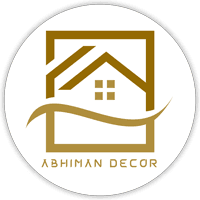When it comes to kitchen renovations or designing a new space, one of the most debated choices homeowners face is between open shelving and upper cabinets. Both storage solutions have their unique appeal and serve different needs. Choosing the right option not only influences the aesthetic of your kitchen but also impacts functionality, storage capacity, and maintenance.
In this comprehensive guide, we’ll dive into the pros and cons of open shelving vs. upper cabinets, explore trending kitchen design ideas, and help you decide what suits your space, style, and storage needs best.
Open Shelving: The Minimalist Trend with Big Style
What Is Open Shelving?
Open shelving consists of wall-mounted shelves without doors, offering an open, airy look. It’s a popular feature in modern farmhouse, Scandinavian, and contemporary kitchens.
Pros of Open Shelving
1. Aesthetic Appeal
Open shelves create a light, open feel that’s perfect for small or narrow kitchens. They make the room appear larger and more inviting.
2. Easy Access
With everything on display, it’s easier to grab dishes, glassware, or ingredients without opening multiple cabinets. This improves workflow efficiency, especially in busy households.
3. Customizable and Stylish
Open shelving allows you to showcase decorative items, beautiful dishware, cookbooks, and greenery. It adds a personalized touch and makes the kitchen feel more lived-in.
4. Cost-Effective Option
Generally, open shelves are less expensive than custom cabinetry, making them ideal for budget-conscious renovations.
Cons of Open Shelving
1. Limited Storage
Open shelves typically hold less weight and volume than traditional cabinets, which may be a deal-breaker for larger families.
2. Maintenance & Cleaning
Because items are exposed, they collect dust and grease faster. You’ll need to clean both the shelves and their contents regularly.
3. Visual Clutter
Not everyone can maintain a perfectly curated look. If not styled carefully, open shelving can quickly look cluttered and chaotic.
Upper Cabinets: Classic Storage with Maximum Functionality
What Are Upper Cabinets?
Upper cabinets are the traditional closed storage units mounted on kitchen walls. They’ve been a kitchen design staple for decades and offer a clean, uniform look.
Pros of Upper Cabinets
1. Ample Storage Space
Cabinets can store large appliances, pantry items, and a wide range of kitchen essentials out of sight. They’re ideal for maximizing vertical space.
2. Concealed Clutter
Closed doors hide the mess, making it easier to maintain a clean look even when things are disorganized inside.
3. Protection from Dust & Grease
Items stored inside cabinets are protected from kitchen grime, reducing the need for frequent cleaning.
4. Design Versatility
Cabinets come in various styles, colors, and finishes. Whether you’re aiming for sleek modern minimalism or classic shaker-style cabinets, there’s a look to match any kitchen.
Cons of Upper Cabinets
1. Bulkier Appearance
Upper cabinets can make a small kitchen feel tight and enclosed, particularly if the ceilings are low or the room lacks natural light.
2. Higher Cost
Custom cabinetry, especially with premium materials and finishes, can be expensive and may require professional installation.
3. Accessibility Issues
Items at the back of deep upper cabinets can be hard to reach, making them less convenient for daily use.
Blended Approach: Best of Both Worlds
One of the hottest trends in kitchen design is the blended approach—combining both open shelves and upper cabinets for a balanced aesthetic and practical storage solution.
Why It Works:
- Use upper cabinets for hiding away less attractive or bulkier items.
- Install open shelves to display your favorite pieces and add personality.
- Create visual interest with a mix of textures and materials.
This approach caters to both form and function, offering storage where you need it and style where it counts.
Factors to Consider When Choosing
1. Kitchen Size
- Small kitchens benefit from open shelves that open up the room.
- Larger kitchens can accommodate upper cabinets without sacrificing openness.
2. Lifestyle & Cooking Habits
- Frequent cooks may prefer upper cabinets for practical reasons.
- If you lean more toward hosting and aesthetics, open shelving may suit your style.
3. Maintenance Willingness
- Open shelves require more regular cleaning.
- Upper cabinets are lower maintenance in terms of visible dirt and dust.
4. Budget Constraints
- Open shelves are generally more budget-friendly.
- Custom cabinetry adds to project costs but may increase resale value.
Trending Kitchen Design Ideas with Open Shelving and Cabinets
1. Floating Wooden Shelves with Subway Tile
Pairing rustic wooden shelves with a white subway tile backsplash is a timeless look that blends warmth and texture.
2. Two-Tone Cabinetry
Combine upper white cabinets with lower dark cabinetry and mix in a few open shelves for contrast.
3. Glass-Front Cabinets
Want the look of open shelving but with dust protection? Glass-front cabinets offer a compromise between open and closed storage.
4. Corner Open Shelves
Use awkward corners for open shelves to maximize storage and break up the boxy look of full cabinetry walls.
5. Industrial Metal Brackets
Give your kitchen an edgy feel with metal brackets supporting reclaimed wood shelves.
There’s no one-size-fits-all answer to the open shelving vs. upper cabinets debate. Your decision should be guided by your kitchen’s size, your personal style, how you use the space, and how much maintenance you’re willing to take on. For many homeowners, a hybrid approach that incorporates the best of both worlds delivers an optimal mix of style and practicality.
Whether you opt for open shelves, upper cabinets, or a combination of both, the key is to create a kitchen that reflects your lifestyle and makes cooking, cleaning, and living more enjoyable.
For more expert kitchen renovation tips and inspiration, subscribe to our blog or explore our latest kitchen makeover guides!
